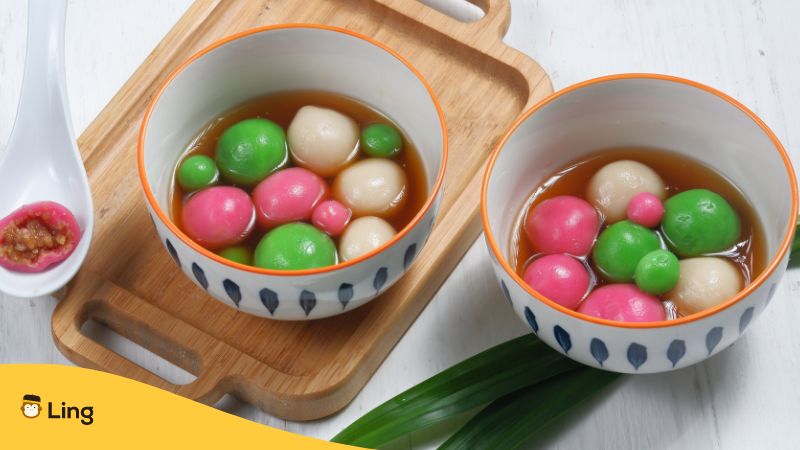Understanding flavors in Chinese cuisine can be tricky when you’re first visiting the country! But having a grasp of some key taste words opens up a whole world of culinary discovery across China. See, native dishes incorporate a central harmony between five distinct flavors and each region even specializes in 1 or 2 specific tastes.
So whether you wanna order braised pork belly with precise spiciness in Sichuan, sweet pineapple cakes as gifts in Taipei, or kick up the sourness of your tangy Shanghai soup dumplings, equipped with basic vocabulary makes all the difference.
In this beginner’s guide to flavors in Chinese, I’ll break down the 5 fundamental taste sensations that locals distinguish between. We’re talking sour, bitter, sweet, umami, and spicy/hot – plus handy modifiers for texture and degree.
I’ll sprinkle in some perfect example dishes so you can drool over the colorful spectrum of flavors awaiting your palate as you travel to China! With just a few keywords, you can decipher cryptic Chinese words, communicate preferences politely to any server or chef, and fully immerse your tastebuds in this amazing cuisine without apprehension.
Table of Contents

Basic Flavors In Chinese Cuisine
Sour Flavor – Suān (酸)
First up in our Chinese flavors tour is suān (酸), the scintillating sensation of sourness! This tangy twist makes dishes pop and awakens your tastebuds. We’re talking zesty citrus juices splashed over succulent meats, showerings of bright vinegar that cut through rich broths, and, of course, those ubiquitous sour pickled veggies served with every meal.
You’ll spot suān on menus and should totally remember it as that piercing flavor – almost making your mouth water a bit just imagining it! Try using it in context: “Wǒ xiǎng yào yīgè wēi suān de tāng” (我想要一個微酸的湯) is “I’d like a slightly sour soup.”
Bitter Flavor – Kǔ (苦)
I’ll admit, this one takes some acquired tasting for many visitors not raised on bitter Chinese ingredients as appetizing. But give those tongue receptors a chance to adapt, and suddenly, that subtle tongue-drying sensation opens up whole new dimensions.
Think earthy bitter melon, nostalgic herbal soups that warm you to the core, or nutty black sesame desserts with rich aromas. Kǔ grows on you over the years and rounds out salty/sour/spicy edges beautifully! Once accustomed, try out phrases ordering mapo tofu like “Qǐng zuò tā màpó dòufu kǔ yīdiǎn” (请做它麻婆豆腐苦一点) to ask for an extra numbing spice kick.

Sweet Flavor – Tián (甜)
Who doesn’t crave a little dessert delicacy between salty, spicy main dishes on the mainland? From the melt-in-your-mouth magic of rice balls to cured fruits that satisfy candy cravings, you’ll welcome sweet accents. Infusing sweet notes into meat or veggie dishes is popular too – trust me, savory caramelized unagi eel hits differently.
You definitely wanna have tián in your linguistic repertoire to politely request extra sugar or recommend sweet menu items to companions. Try out, “Qǐng zài zhège táng yīdiǎn tián” (请在这个汤一点甜) to ask for slightly sweeter soup.
Savory Flavor – Xiān (鮮)
This luscious flavor delivers a sensory experience beyond just salty, balancing amino acids and richness that keeps you returning bite after bite. The intermingling xiān sensation is tough to translate but instantly addictive, think slow cooked bone broths, pungent cured meats, or nutty mushrooms.
Once your tongue learns to distinguish xiān depths, you’ll be hooked on describing subtle aroma profiles and requesting extra infusion in certain dishes! Try sentences like “Qǐng jiā ròu xiān wèi” (请加肉鲜味) when ordering minced meat to ask for an additional savory flavor.
Spicy Flavor – Lā (辣)
Woo! No flavor profile guide would be complete without a little heat – time for lā (辣), aka the spiciness sensation lighting up so much Chinese fare! Trust me, you gotta taste the trademark peppercorn zing radiating in notorious Sichuan dishes. Learn to love the chili oil gleam swimming with dumplings. Or braise yourself for tongue-numbing málà májiàng tingle if you dare!
The key is knowing your limit, better start mild before scorching off all tastebud perception, my friends! When ordering, say “Qǐng yīdiǎn lā” (请一点辣) to kindly request just slight spiciness, please. If the mapo tofu still has you breaking a sweat, tell the waiter “Tài lā le!” (太辣了!) = “That’s too spicy!” so they dial it back.
General Flavor Profile Of Traditional Chinese Cuisine
Alright, after breaking down the 5 pillars of flavor – sweet, sour, bitter, spicy, savory – you’re probably wondering: what’s the overall Chinese food taste vibe? Well, my friends, it’s all about balance! See, native Chinese chefs meticulously blend and contrast different flavor dimensions within single dishes and across entire meals.
So you’ll get a daydreamy interplay of sweet and sour, gentle teasing of bitter and hot, and rich awakening of umami. This cuisine keeps you guessing in the best possible eating adventure way! More importantly, most Chinese food emphasizes natural flavors – why overwhelm perfect wok-seared veggies or gentle seafood when you can let original essences shine?
That’s why seasoned Chinese diners wince when newcomers douse everything in soy sauce before the first bite! First, you have to taste the texture, aromas, and care that goes into cooking. Then, once the actual flavors emerge, you can customize spice, acidity, etc., to suit your preferences.
Ready For Some Spicy Food From China?
Well there you have it, my foodie friends – all the fundamental flavors and vocabulary needed to start navigating Chinese cuisine’s boundless taste terrain with confidence!
Want the full cultural context to savor? Dive deeper into Chinese language journeys with handy apps like the Ling app. Trust me, soon you’ll instinctively know the difference between málà and kǔ flavors before servers even finish describing regional specialties!



































































